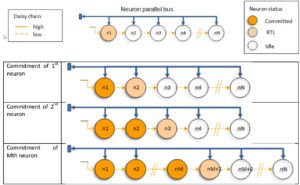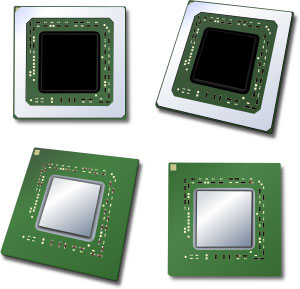Artificial neural networks (ANNs) are silicon-based processor architectures inspired by, and very simply patterned after, the human brain, which learns by example and “prunes” connections that don’t get used anymore. What exactly is an artificial neural network? Dr. Robert Hecht-Nielson, Adjunct Professor of Electrical and Computer Engineering at USCD, was paraphrased by Maureen Caudill as […]
FAQ
Optimizing power efficiency in microcontrollers
Power efficiency is more important now than in the past, as portable, battery-powered devices compete for market share on features and battery life. Battery technology has not improved radically in the recent past, and attempts at innovation can wreak havoc with overheated batteries that sometimes burst into flames. Therefore, using less energy to do more […]
Real time clock (RTC) vs. clock: What is the difference?
Microcontrollers act upon instructions a few bits at a time, collecting the next batch of bits at regular intervals. Those regular intervals need to have a regular cadence for the MCU to be predictable, so MCUs have at least one clock to keep timing going at a regular pace, much like you would use a […]
Trade-offs in choosing 8-bit vs. 16- and 32-bit architectures
Besides the advantage of higher performance in performing calculations and faster data transfers, what are the advantages of working with an MCU that has a larger bus width? MCUs with higher data bus widths enjoy higher performance in terms of faster operations, often more powerful development tools, more features, and better power efficiency. In general, […]
How to wire a switch to a microcontroller with pullup resistors
If you want a button or switch as an input on a microcontroller (MCU), you can use a “pullup resistor” so that the input is seen as a logical high when the (normally open) switch or button is closed. A pullup resistor is connected to Vcc, or logical high for your input, and therefore “pulls […]
What do you look for in MCUs, by application, across various vertical markets?
Embedded engineers design and develop electronics hardware and software for many different market segments, often called “vertical markets.” Major vertical markets include automotive, medical, industrial, military/aerospace, and consumer electronics. Of these major markets, some commonly desired attributes of electronics emerge. Automotive requirements include small size, low weight, low cost, power efficient, reliable electronics with ratings […]
A beginner’s guide to microcontrollers
by Jon Wilder Time after time I see beginners try to get started in embedded electronics, only to be overwhelmed and not know where to start. Some even make the mistake of trying to write their own code without first gaining a thorough understanding of the microcontroller/microprocessor they’re working with, the programming language they’re working […]
Serial EEPROM – A Great Form of Non-Volatile Storage
by Jon Wilder Most PIC microcontrollers have some form of non-volatile EEPROM on chip. However, the largest I’ve seen is 1KB available on the 18F series. There are many applications in which we may need a great deal more than this. The Storage You Don’t Have For instance, what if we have a MIDI device […]







